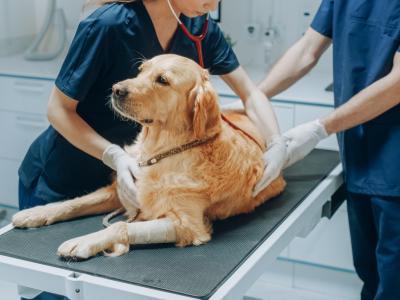Vaccine coverage remained high in 2013 but pockets of concern continue
Vaccination coverage of young US children against all routinely recommended vaccines remained high and even increased for certain vaccines last year, according to data from the National Immunization Survey (NIS), published today in Morbidity Mortality Weekly Report (MMWR).
Increases in coverage rates for 2013 over 2012 were seen for rotavirus vaccine (73% vs 69%), for one or more doses of Hep (hepatitis) A vaccine (83% vs 82%), and for the Hep B birth dose (74% vs 72%). Coverage rates were stable, all remaining above 90%, in 2013 compared with 2012 for MMR (measles, mumps, rubella), polio, Hep B, and varicella vaccines. Less than 1% of children received no vaccines.
Three vaccine series that require a booster dose during a child's second year of life—DTaP (diphtheria, tetanus, pertussis), Hib (Haemophilus influenzae type b), and PCV (pneumococcal disease) had coverage rates that were unchanged in 2013.
Children living in poverty had lower coverage rates for the booster doses of all the vaccines just mentioned as well as for polio, rotavirus, and Hep B vaccine series. The MMWR report notes that free vaccines are available to families in need through the Vaccines for Children program.
Coverage varied greatly by geographic area. For example, vaccination with at least one dose of MMR ranged from 96% in New Hampshire to 86% in Colorado, Ohio, and West Virginia.
Nationally, MMR coverage was 92%, but 1 in 12 children did not receive the first dose on time, according to the report. The authors note that this leaves a sizable number of young children susceptible to measles, highlighting the importance of attention to the disease at a local level.
The "combined vaccine series" measurement, which assesses overall performance by means of the completion of immunization series for 11 diseases, ranged from a high of 82% in Rhode Island to a low of 57% in Arkansas.
The NIS, which has been conducted annually since 1994, is a random telephone survey of households with children aged 19 to 35 months of age. The 2013 estimates were based on 13,611 completed interviews where vaccination data were adequate.
Aug 29 MMWR NIS report
Aug 28 CDC press release on NIS report
NIS Web site
Vaccines for Children Web site
FDA puts Pfizer's candidate C difficile vaccine on fast track
An experimental Clostridium difficile vaccine made by Pfizer Inc. has received a "fast track" designation from the US Food and Drug Administration, which could speed its further development and licensing, the company announced today.
The vaccine, called PF-06425090, is designed to prevent C difficile–associated disease, which can include life-threatening diarrhea and pseudomembranous colitis, the company said. It is currently in phase 2 testing.
The fast-track approach is designed to facilitate the development and expedite the review of new drugs and vaccines intended to treat or prevent serious conditions and to address an unmet medical need, the Pfizer announcement noted.
C difficile is the most common cause of healthcare-associated infections and a common cause of diarrhea associated with antibiotic treatment, the company said.
Aug 28 Pfizer press release
Cholera vaccine campaign launched for Sudanese refugees in Ethiopia
The Gambella region of Ethiopia, which is currently home to more than 185,000 South Sudanese refugees escaping violence in their country, is the site of a mass cholera vaccination campaign launched by Doctors Without Borders (Medecins Sans Frontieres, or MSF), according to an Aug 26 Reuters report.
The oral vaccine, which is given in two doses, is being administered at fixed sites and through mobile teams. More than 300 MSF workers have been deployed to the area.
The campaign, supervised by the Administration for Refugee and Returnee Affairs with technical support from United Nations agencies, reached 151,723 (85%) of the refugees in its first round; the second round began Aug 15.
A cholera epidemic was declared in June in South Sudan. Given the large number of Sudanese fleeing to neighboring Ethiopia, the overcrowded conditions and poor sanitation in the refugee camps, and the fact that cholera is endemic in Gambella, the area "could provide a perfect breeding ground for the disease," says the report.
MSF's emergency coordinator in Gambella, Madi Foura Sassou, said the vaccine is more than 60% effective.
Aug 26 Reuters report











